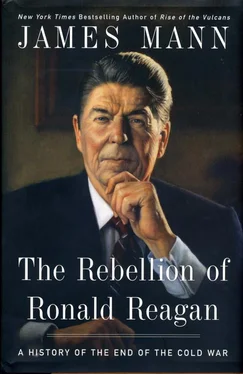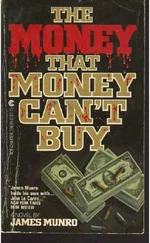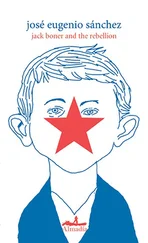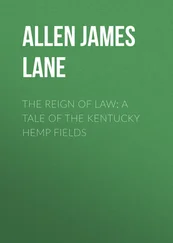The fact that Reagan shifted course does not exclude the possibility that the policies of his first term had a long-term effect on the Soviet economy that might have eventually led to the country’s disintegration. Yet there is little evidence that the American actions brought down the Soviet regime. To be sure, some of the Casey-led operations served the purpose of weakening the Soviet Union. Above all, there was the covert program in Afghanistan, which first prolonged the war there and then led to a Soviet withdrawal. Reagan’s Strategic Defense Initiative had an impact only if one accepts Gorbachev’s debatable assumption that the Soviet Union was obliged to stop it or match it.
The Soviet economy was foundering because of deep-seated and chronic problems that had little or nothing to do with the Reagan administration’s policies. Although the Soviet system was in decline, it was not headed toward a collapse, and Reagan’s first-term policies, including the defense buildup and the covert-action programs, did not cause the collapse. “Even though Soviet socialism had clearly lost the competition with the West, it was lethargically stable, and could have continued muddling on for quite some time,” observed one scholar who studied the Soviet economy for this era. 22
The Soviet leadership was overextended and would have had to retrench in one way or another, but it could have survived. Confronted by the new challenges from the United States, the Soviet Union might have sought to cut defense spending in the short term while slowly regaining strength over the long run, meanwhile maintaining the existing, repressive political order. 23(In fact, the Washington critics of Reagan’s second-term policies—not just the critics on the political right, but also “realist” Soviet specialists like Brent Scowcroft and Robert Gates—were concerned that Gorbachev’s strategy was to rebuild Soviet power in this gradual fashion.)
Instead, the proximate cause of the Soviet collapse was Gorbachev. It was Gorbachev who made the historic decision not to intervene with force in Eastern Europe in 1989. It was Gorbachev who elected to reform the Soviet system in a way that left it partially opened and partially closed, partially democratized but with the Communist Party and the KGB still the country’s most powerful institutions. This was the peculiar, unworkable hybrid arrangement that led, eventually, to the Soviet implosion.
The policies of Reagan’s first term did not determine what Gorbachev would do. Rather, Reagan’s willingness to do business with Gorbachev gave the Soviet leader the time and space he needed to demolish the Soviet system. The president and his secretary of state gave Gorbachev the clear though questionable message that if he reformed the economy, if he managed to integrate the Soviet system into a rapidly globalizing world, then that system might survive. Gorbachev unintentionally destroyed the Soviet system. Reagan gave him the help he needed to do it.
Those who dealt directly with Reagan during his second term did not believe he had ever sought to bring down the Soviet regime. “I don’t think he ever thought of it in terms of bankrupting the Soviet Union or forcing it to collapse,” said Frank Carlucci, who served as Reagan’s national security adviser and defense secretary. “He just saw it as a lousy system, and if we could negotiate them into some common sense, they’d change their system.”
Asked two decades later whether Reagan had intended to topple or bankrupt the Soviet regime, West German chancellor Helmut Kohl replied, “No, I don’t think so. But he did think that the Soviet Union was simply living above its means.” 24
-4-
THE GRAND TOUR REJECTED
By early September 1987, the Reagan White House was already excitedly preparing for a summit in the United States, even though Mikhail Gorbachev had not yet agreed to one. White House documents show that officials weighed the options, sites, and logistics over and over again.
At times, the internal memos read as though the principal adversary of the White House was not the Soviet Union but the State Department. White House officials working for Chief of Staff Howard Baker and National Security Adviser Frank Carlucci wanted to make sure that they, not the diplomats, would be in charge of Gorbachev’s still-unscheduled visit to America. One list of talking points prepared before a meeting between Baker and Secretary of State George Shultz pointed out that the “President’s personal support operation” had been in charge of trips to the United States by Queen Elizabeth and Chinese premier Zhao Ziyang. The memo then set out the arguments for running a Gorbachev summit in the same fashion:
Previous meetings with Gorbachev (Geneva and Iceland) were result of coordination group chaired by Chief of Staff and NSC advisor and a working group of their designates….
Overall control of schedule and events should rest with group representing all relevant agencies (State, White House, NSC, USIA, etc.); group to be co-chaired by Baker and Carl ucci, as was done in past. [emphasis in original] 1
Reagan oversaw this planning. He made it clear to the staff that he desired as extensive a summit as possible. The Reagans wanted to invite the Gorbachevs to their home outside Santa Barbara. In addition, the president himself was eager to take the Soviet leader on a tour of the United States to display the wealth and prosperity of the country. “He wanted to take Gorbachev to car plants, he wanted to show him his beloved California and he wanted him on the ranch,” recalled Colin Powell, then a young army officer serving as deputy national security adviser, who had been assigned by Carlucci the unenviable task of arranging the summit. “He was so confident of who we were and what we are that he wanted Gorbachev to see it.” 2
White House memos set forth the various scenarios. The most elaborate was called “The Grand Tour,” a week-long extravaganza. After a couple of days in Washington, Gorbachev could be taken on a multistop westward excursion across the United States to California. White House officials proposed, for example, that Reagan could show Gorbachev a “City That Works”; the possibilities included Pittsburgh, Atlanta, and St. Louis. They also suggested taking the Soviet leader to a farm state and a national park.
A second, middle-ground scenario was a “Washington and California” summit. After Washington, Gorbachev might fly to Los Angeles for a foreign-policy speech at the World Affairs Council and some Hollywood event, before finally going up the Pacific Coast to the Reagan ranch. Even for the third and most limited option—called “Washington Only”—White House planners tried to satisfy Reagan’s desire to show Gorbachev the United States through what they called an event “Outside the Beltway”—a reference to the suburban highway that encircles Washington. They listed a number of possibilities such as Harpers Ferry, West Virginia, and Gettysburg, Pennsylvania. The memos did not explore the tricky question of what lessons Gorbachev should be expected to draw from America’s Civil War sites. 3
In mid-September, Soviet Foreign Minister Eduard Shevardnadze landed in Washington carrying a letter from Gorbachev to Reagan. The Soviet leader made it clear he wanted to get past the talking stage and reach some concrete agreement with Reagan soon. “The question now is whether we will take that first step which the peoples of the world are so eagerly awaiting,” Gorbachev wrote. 4
The letter appealed to Reagan for further progress in a number of areas, including a treaty on long-range strategic weapons and limits on the president’s Strategic Defense Initiative. On one issue, Gorbachev was specific: he was ready to conclude the deal banning Soviet and American intermediate-range missiles. Gorbachev also said he was prepared to talk about coming to the United States; he said he had authorized Shevardnadze to talk with Reagan and Shultz about “possible options for developing contacts at the summit level.” Yet Gorbachev remained elusive—from the Reagans’ perspective, distressingly so—about a date for a summit. In three days of talks in Washington, Shevardnadze refused to be pinned down. The Soviets seemed to be holding out to see if Reagan might make some concessions elsewhere in exchange for a summit.
Читать дальше












